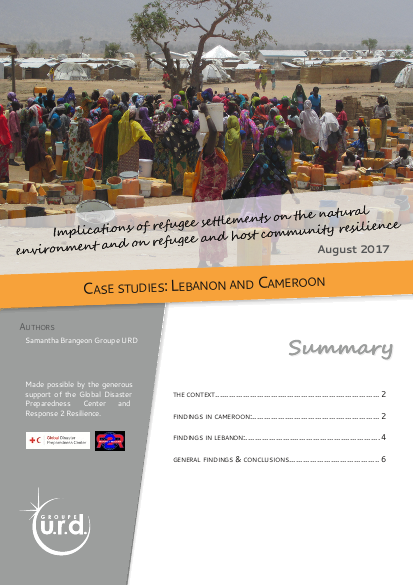Case Studies: Lebanon and Cameroon

The rapid arrival of very large numbers of refugees in concentrated areas tends to accentuate the impact that populations will have on the environment, due to the fact that humanitarian operators manage people and infrastructure based on short-term considerations. This leads to increased pressure on raw materials and ecosystems, and tends to create tension with the host population.
The study has two objectives:
- to identify environmental and social pressure that exists around the sites where displaced people settle, the consequences that these can have, and possible solutions adapted to each context;
- to find ways to reduce these tensions and encourage programmes to adopt approaches based on long-term sustainability.
These themes are currently being promoted by Groupe URD and different working groups, such as the Humanitarian Environment Network and the OCHQ/UNEP Joint Environment Unit, with the aim of extending environmental considerations within humanitarian programmes and organisations, and thus increasing the resilience of host and refugee communities.
A first case study was carried out in Lebanon in January 2016 in the peri-urban region of Sahlé-Chtaura, where there are several informal settlements, the rural region of Ghazzeh, where the refugee population is ten times higher than the host population, and the city of Tripoli.
The second has been carried in March 2017 out in the Minawao refugee camp in the far north of Cameroon. There are currently 62 000 refugees in Minawao camp, who have fled the conflict caused by Boko Haram in Nigeria. The camp is located in a very arid region where the effects of climate change have already been felt for a number of years (desertification, lack of rain, etc.).